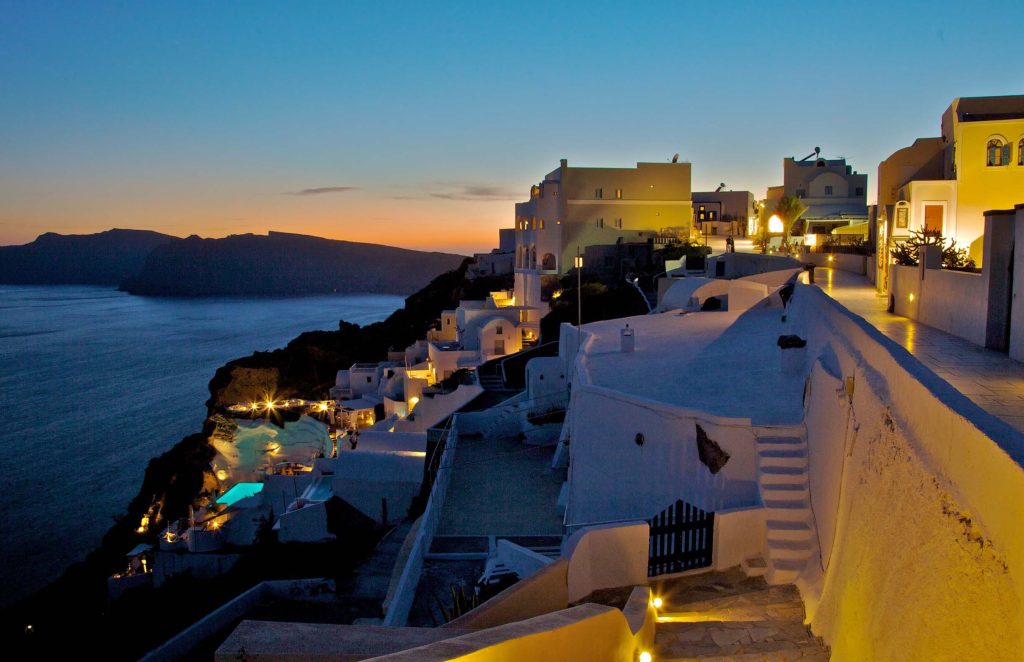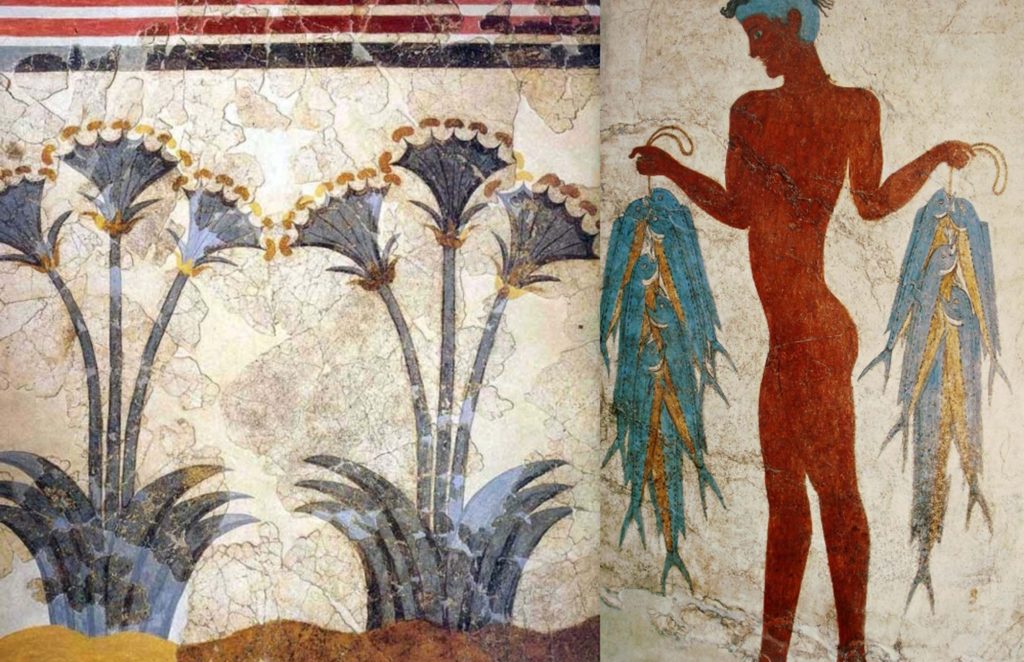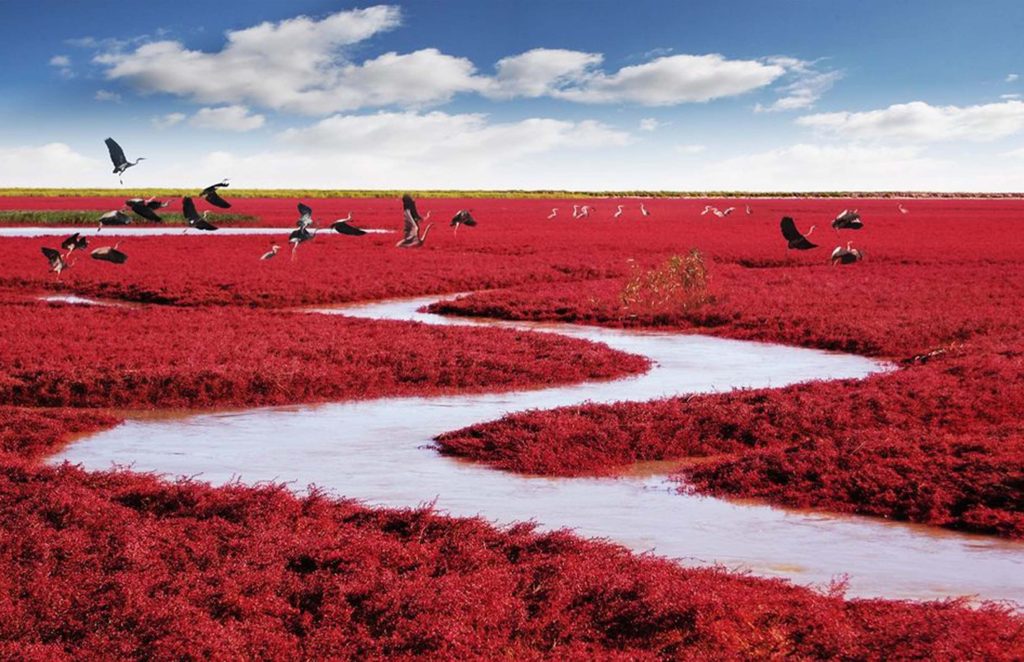Table of Contents:
- Santorini Unveiled: A Gem in the Aegean Sea
- Oia – A Photographer’s Dream
- Fira – The Vibrant Capital of Santorini
- Pyrgos – A Tranquil Escape in Santorini
- Akrotiri – Unveiling Ancient History
- Red Beach – Nature’s Masterpiece
I often find myself drawn to destinations that offer a blend of natural beauty, cultural richness, and opportunities for adventure. This June, I embarked on an unforgettable journey to the enchanting island of Santorini, Greece. It was a dream come true, and I couldn’t wait to explore the island’s picturesque villages, soak in its stunning scenery, and uncover its hidden treasures.
I’ll take you on a comprehensive tour of Santorini, sharing not only the well-known attractions but also the lesser-known gems that made my trip truly special. We’ll wander the narrow streets of Oia, soak in the vibrant atmosphere of Fira, find serenity in Pyrgos, delve into ancient history in Akrotiri, and marvel at the natural wonder of Red Beach. Along the way, I’ll provide detailed information about tickets, opening hours, and my personal impressions of each place. So, fasten your seatbelts and get ready for an adventure of a lifetime in Santorini!
Santorini Unveiled: A Gem in the Aegean Sea

Santorini, often referred to as Thira in Greek, is an island like no other. Located in the Aegean Sea, it’s renowned for its striking landscapes, traditional white-washed buildings, and breathtaking sunsets. Before we dive into the specifics of each village and attraction, let’s take a moment to appreciate the unique charm of Santorini as a whole.
Imagine yourself surrounded by the deep blue waters of the Aegean, with the island’s signature white houses and blue-domed churches perched on dramatic cliffs. This picturesque scenery is what Santorini is all about. Whether you’re seeking romance, adventure, or simply a place to unwind, Santorini offers it all.
The island is the result of a volcanic eruption that occurred around 3,600 years ago, shaping its current topography. The caldera, a vast crater formed by the eruption, is now filled with the sapphire waters of the Aegean, creating a breathtaking backdrop for your Santorini adventure. Every corner of the island tells a story, and it’s time to explore the chapters.
Oia – A Photographer’s Dream

Tickets and Opening Hours:
Oia is unique among Santorini’s villages in that it functions as an open-air museum, and there are no specific entrance fees or opening hours to access this stunning destination. You’re free to explore its captivating streets and breathtaking views at your own pace.
My Impression: A Sunset to Remember
Oia is often referred to as the “Crown Jewel of Santorini,” and it’s easy to see why. This charming village is a photographer’s dream, with its narrow, winding streets, picturesque houses, and an iconic blue-domed church that graces countless postcards.
My journey to Oia began early in the morning, as I wanted to experience its magic before the crowds arrived. As I strolled through the labyrinthine streets, I couldn’t help but be enchanted by the traditional Cycladic architecture. The gleaming white buildings with their vibrant blue accents create a striking contrast against the azure sea and sky.
Oia is famous for offering one of the most breathtaking sunsets in the world, and I had the privilege of witnessing it firsthand. As the sun dipped below the horizon, casting a warm, golden glow over the caldera, there was a palpable sense of awe among the spectators gathered at the viewpoint. It was a moment of pure serenity and beauty, etching itself into my memory forever.
Exploring Oia’s Hidden Gems
While the sunset is undoubtedly Oia’s main attraction, there’s much more to explore in this enchanting village. Here are a few hidden gems I discovered during my visit:
- Amoudi Bay: Located below Oia, this charming fishing village is a serene escape from the bustling streets above. You can reach it by descending a staircase of approximately 200 steps or by taking a short drive. Amoudi Bay is known for its seafood restaurants, offering some of the freshest catches on the island. I savored a delicious seafood platter at one of the tavernas, accompanied by a glass of local white wine.
- The Maritime Museum: Tucked away in the heart of Oia, this museum provides insight into Santorini’s rich maritime history. It houses a collection of nautical artifacts, ship models, and historic photographs. The museum’s small entrance fee is well worth it for those interested in the island’s seafaring heritage.
- Byzantine Castle Ruins: For panoramic views of Oia and the surrounding landscape, I made my way to the Byzantine Castle Ruins. Perched atop the cliffs, these remnants of a medieval castle offer an excellent vantage point for capturing the village’s beauty. It’s especially stunning during the golden hours of sunrise and sunset.
Oia’s charm lies not only in its iconic sights but also in its ability to evoke a sense of tranquility and wonder. It’s a place where you can lose track of time while meandering through its enchanting streets, where every corner seems to reveal a new, captivating vista.
Fira – The Vibrant Capital of Santorini

Tickets and Opening Hours:
Fira, the capital of Santorini, is an open urban area, so there are no specific tickets or opening hours to access it. You’re free to explore the town’s bustling streets and vibrant atmosphere at any time.
My Impression: A Lively Experience
After the serene beauty of Oia, I ventured to Fira, which offers a livelier and more energetic atmosphere. Fira is the island’s commercial and transportation hub, making it a dynamic place to explore.
As I arrived in Fira, I was immediately struck by the vibrant energy that permeates the town. The streets were bustling with tourists from all over the world, and the shops, boutiques, and cafes seemed to beckon with enticing displays of local crafts and treats.
One of the first things I noticed was the breathtaking view of the caldera that greeted me as I stepped off the bus. Fira, like Oia, offers stunning vistas of the volcanic caldera and the endless expanse of the Aegean Sea. It’s the perfect place to snap some postcard-worthy photos.
Culinary Delights in Fira
Fira also boasts a fantastic array of dining options, and I couldn’t resist the temptation to sample some of Santorini’s renowned cuisine. Here are a few culinary delights I experienced in Fira:
- Traditional Greek Souvlaki: A visit to Santorini wouldn’t be complete without savoring a mouthwatering souvlaki. These grilled skewers of seasoned meat, usually served with pita bread and tzatziki sauce, are a Greek street food classic. I found a local eatery in Fira that served some of the best souvlaki I’ve ever tasted, and it was the perfect quick and delicious meal between explorations.
- Greek Salad with Feta and Olives: Greek salad is a delightful blend of fresh vegetables, olives, feta cheese, and a drizzle of olive oil. It’s a simple yet delicious dish that captures the essence of Mediterranean flavors. I ordered Greek salad at a charming taverna in Fira, and it was a refreshing and satisfying choice.
- Local Wine Tasting: Santorini is renowned for its unique volcanic terroir, which produces some exceptional wines. In Fira, I visited a local winery and enjoyed a wine tasting experience. The crisp and mineral notes of Santorini’s Assyrtiko wine were a revelation, and I couldn’t resist picking up a bottle as a souvenir.
Fira’s lively ambiance, coupled with its stunning views and culinary delights, makes it a must-visit destination on Santorini. Whether you’re shopping for local crafts, enjoying a leisurely meal, or simply soaking in the vibrant atmosphere, Fira has something to offer every traveler.
Pyrgos – A Tranquil Escape in Santorini

Tickets and Opening Hours:
Pyrgos, like many of Santorini’s villages, is a place where you can explore freely without the need for tickets or adherence to specific opening hours. It’s an ideal spot for leisurely exploration at your own pace.
My Impression: Discovering Serenity
In search of tranquility and a change of pace, I made my way to Pyrgos, a village that offered a stark contrast to the bustling streets of Oia and Fira. Nestled inland and crowned by the ruins of a Venetian castle, Pyrgos exudes an air of serenity and history.
As I wandered through the village, I was captivated by its distinctive architecture. Pyrgos is known for its charming whitewashed houses adorned with colorful accents, often in shades of blue or ochre. The narrow alleys wind their way uphill, revealing hidden courtyards, traditional tavernas, and small shops selling local handicrafts.
One of the highlights of Pyrgos is the climb to the Pyrgos Castle, perched atop a hill that offers a commanding view of the island. The ascent to the castle is an adventure in itself, with winding paths and stone steps that lead to the summit. It’s a hike that rewards your efforts with breathtaking panoramic views of Santorini’s landscapes.
Pyrgos Castle: A Panoramic Viewpoint
Reaching the summit of Pyrgos Castle, I was treated to a 360-degree vista of the island. The sweeping views encompassed not only Pyrgos but also neighboring villages, the caldera, and the distant Aegean Sea. It was a sight that truly took my breath away.
The castle ruins themselves also hold historical significance. Dating back to the Venetian era, they bear witness to the island’s past as a fortified stronghold. While the castle is now in a state of partial ruin, its walls and remnants provide a captivating backdrop for exploration and photography.
What struck me most about Pyrgos was its serene ambiance. It’s a place where time seems to slow down, inviting you to savor the moment and appreciate the simple pleasures of life. I spent a leisurely afternoon enjoying a traditional Greek meal at a local taverna, soaking in the village’s charm, and reflecting on the beauty of Santorini.
Akrotiri – Unveiling Ancient History

Tickets and Opening Hours:
Akrotiri is a unique archaeological site on Santorini, and it requires an entrance fee for access. The ticket price is typically around €12, and the site is open from 8:00 AM to 8:00 PM during the summer months, making it convenient for exploration.
My Impression: Stepping into the Past
Santorini isn’t just about its natural beauty and charming villages; it’s also a place where history comes alive. Akrotiri, often referred to as the “Minoan Pompeii,” is a testament to the island’s rich archaeological heritage.
My visit to Akrotiri was a journey through time. The site is home to the remains of an ancient Minoan settlement that was buried by a volcanic eruption around 3,600 years ago. Unlike the tragic fate of Pompeii, the residents of Akrotiri likely had sufficient warning to evacuate, resulting in no human casualties. The result is an exceptionally well-preserved archaeological site that offers invaluable insights into ancient life.
As I walked through the excavated streets and buildings of Akrotiri, I was struck by the sense of wonder and connection to the past. The structures, constructed with meticulous attention to detail, reveal the advanced architectural and engineering skills of the Minoans. Frescoes adorning the walls depict scenes of daily life, showcasing the artistry and sophistication of this ancient civilization.
Akrotiri Archaeological Site: A Journey Through Time
One of the most remarkable features of Akrotiri is the way it has been preserved. The entire site is covered by a protective roof structure, which shields it from the elements while allowing visitors to explore comfortably. This careful preservation ensures that the site remains accessible for generations to come.
Highlights of Akrotiri include:
- The Streets of Akrotiri: Wander through the ancient streets, where you’ll discover squares, houses, and workshops that provide a glimpse into Minoan life.
- The Xeste 3 Building: This multi-story structure features beautifully preserved frescoes that offer insights into Minoan religious and ritual practices.
- The West House: Explore this well-preserved house, complete with its own courtyard and frescoes depicting marine life, perhaps an homage to the island’s maritime culture.
- The Theran Eruption Wall: A particularly poignant exhibit is the Theran Eruption Wall, which displays a timeline of the volcanic eruption that ultimately led to the settlement’s abandonment.
Akrotiri is a must-visit for history enthusiasts, archaeology buffs, and anyone curious about the island’s ancient past. It’s a place where the pages of history are not just read but experienced, where the echoes of a civilization that thrived millennia ago still resonate.
Red Beach – Nature’s Masterpiece

Tickets and Opening Hours:
Access to Red Beach itself is free, but if you plan to park nearby, there may be a small parking fee. The beach is open year-round, but it’s most popular during the summer months when visitors flock to its unique shores.
My Impression: The Beauty of Contrasts
Santorini’s landscapes are a study in contrasts, and Red Beach is a prime example of nature’s artistry. Located near the village of Akrotiri, Red Beach is renowned for its dramatic red cliffs and dark volcanic sand—a sight that is both surreal and mesmerizing.
My visit to Red Beach was an experience I won’t soon forget. As I approached the beach, the striking contrast between the deep blue waters of the Aegean and the rich red cliffs created a visual spectacle. It was as if I had stepped into a different world, one where the elements conspired to create a landscape that defied convention.
The beach itself is relatively small, with limited space for sunbathing and swimming. However, the uniqueness of Red Beach lies in its surreal beauty rather than its size. I found a secluded spot to relax, soaking in the sun’s rays and the natural wonder that surrounded me.
Red Beach Adventures and Tips
For those looking to make the most of their visit to Red Beach, here are some adventures and tips to consider:
- Snorkeling: The crystal-clear waters of Red Beach make it an excellent spot for snorkeling. Bring your snorkel gear or rent it from nearby shops to explore the underwater world.
- Sun Protection: Given the lack of natural shade on the beach, it’s essential to bring sunscreen, sunglasses, and a wide-brimmed hat to protect yourself from the strong Mediterranean sun.
- Hydration: Stay hydrated by bringing plenty of water with you. The combination of sun and sea can be dehydrating, so it’s essential to drink enough fluids.
- Early Morning Visit: If you prefer a quieter and less crowded experience, consider visiting Red Beach in the early morning hours. This is also an excellent time for photography as the light is soft and the colors are vibrant.
Red Beach is a testament to the raw power of nature and the captivating beauty it can create. It’s a place where you can immerse yourself in the wonder of Santorini’s geological history and appreciate the artistry of the earth.
Santorini is a destination that leaves an indelible mark on your heart. Its beauty is beyond compare, and its villages and landscapes offer a rich tapestry of experiences. From the dreamy streets of Oia to the ancient mysteries of Akrotiri, there’s something here for every traveler.
So, prepare your camera, pack your sun hat, and get ready to explore, capture, and savor the magic of this enchanting island in the Aegean. Happy travels!
